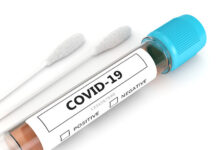
Two Canadian Carriers recognize the need for Specialized Messaging for an Oft-Overlooked Consumer Group
OTTAWA, Jan. 21, 2019 /CNW/ – Canada’s wireless service providers have launched a new video series to support Deaf, Deaf-Blind and Hard of Hearing (DDBHH) wireless customers. The new ASL and LSQ video series is designed to support DDBHH consumers in understanding the terminology commonly used by wireless service providers.
The new Wireless Terminology series – which is available on the Canadian Wireless Telecommunication Association’s (CWTA) wirelessaccessibility.ca website, as well as the websites of carriers – is part of the on-going collaboration between service providers and the DDBHH community. Each video explains commonly used terms in plain language, gives examples that are useful for better clarity and deals with a specific theme:
- Wireless Terminology – Contract and Billing – Getting Started
- Wireless Terminology – Contract and Billing – Financial Obligations
- Wireless Terminology – Contract and Billing – Important Info
- Wireless Terminology – Plan Types and Add-ons
- Wireless Terminology – Features and Services
- Wireless Terminology – Coverage and Network
- Wireless Terminology – Devices and Technical Support
“Canada’s wireless telecommunications industry is committed to improving and enhancing usability for all Canadians,” said CWTA President and CEO Robert Ghiz. “This new ASL and LSQ video series is just the latest way we are ensuring that wireless services are accessible, in a clear and consistent manner across all wireless service providers.”
The release of this video series comes just a few months after the release of an ASL and LSQ video that provides the DDBHH community with access to an overview of the recently modified Wireless Code in an accessible format. All videos were produced with closed captioning and include a voice-over to ensure maximum accessibility.
“As an accessibility group that advocates for enhanced accessibility of wireless telecommunications information in Canada, we are thrilled to see the release of ASL and LSQ videos of common wireless terminology,” said Lisa Anderson-Kellett, Chairperson, Deaf Wireless Committee of Canada. “This is critical for Deaf, Deaf-Blind and Hard of hearing Canadian customers to clearly understand the wireless services that are being purchased from the companies.”
The Wireless Code was created by the Canadian Radio-television and Telecommunications Commission (CRTC) in 2013, and updated in 2017, to reflect new wireless service provider obligations. The ongoing partnership between Canada’swireless service providers and the DDBHH community further underlines the industry’s commitment to ensuring informed access to its services by all consumers across Canada.
Canadian Wireless Telecommunications Association (CWTA)
The CWTA is the authority on wireless issues, developments and trends in Canada. It represents companies that provide services and products across the wireless sector. Representing the industry before all levels of government and various regulatory agencies, CWTA actively promotes the industry with the goal of ensuring continued growth of the wireless sector in Canada. CWTA administers a number of initiatives on behalf of its members, including corporate social responsibility programs and the national common short codes program.
Deaf Wireless Canada Consultative Committee (DWCC)
The DWCC is a standing committee of the CAD-ASC and is a group of Deaf, Deaf-Blind, and Hard of Hearing (DDBHH) consultants, analysts and committee volunteers across Canada. DWCC’s mandate is to advocate for equality for DDBHH Canadians in wireless telecommunications as in: 1) fair, uniform, cost reasonable wireless data plans for ASL and LSQ users; 2) transparent and clear advertisement of plans offered; 3) decreased disparity of wireless product and service provisions within the companies; 4) promotion and availability of wireless software applications (apps) that ensure functional equivalency; and 5) accessible wireless emergency service provisions in Canada.
Related links
- https://www.wirelessaccessibility.ca/
- Announcement: https://www.youtube.com/watch?v=tg36Rz1HQb4&t=1s
- Common Terminology video series: https://www.youtube.com/watch?list=PLJt2Z_9Kp286Yh-FPuau4Cu7ikkZ1kh47&v=rW0uv-s3Hns
Follow on Twitter | twitter.com/CWTAwireless
SOURCE Canadian Wireless Telecommunications Association
 Related Linkshttp://www.cwta.ca/
Related Linkshttp://www.cwta.ca/



